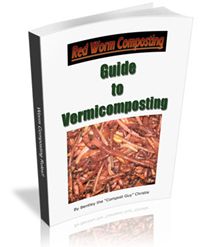Updated: December 16, 2019
A worm composting guide, authored by Bentley “The Composting Guy” Christie, is available via free download if you sign up for his email newsletter.

Of course, you’ll have to give up your email address, but it seems well worth the price to get all that information from someone who has a ton of real-world experience with worm composting.
The Q&A section in the back of the vermicomposting guide is especially helpful. I made some of his suggested changes and quickly saw positive results.
You can get the vermicomposting guide at this link: Red Worm Composting Guide to Vermicomposting.
Worm composting guide experience
My personal experience with worm composting was not a positive one. I found that regular composting was a more efficient way to create compost. It seems that microorganisms were better at working with me than worms when it came to breaking down food scraps.
While worms may break down stuff much faster, they were far more particular about the type of food they needed to stay alive and multiply.
The pH of the material had to be kept within the worm’s “sweet” zone, which is not easy to do. There was a lot of material that I couldn’t put into the worm bin. Instead, it had to go in the regular compost.
Even a few coffee grounds, which worms out in the wild normally like, were too acidic. I killed a lot of worms because of this.
I recommend outdoor composting in either a tumbler or pile. This is a much more effective way to compost.
You can read all about the trials and tribulations of my worm composting adventure at the following articles:
1. Worm Composting Not So Easy
2. Worm Composting Not So Easy, Part II
3. Worm Composting Not So Easy, Part III